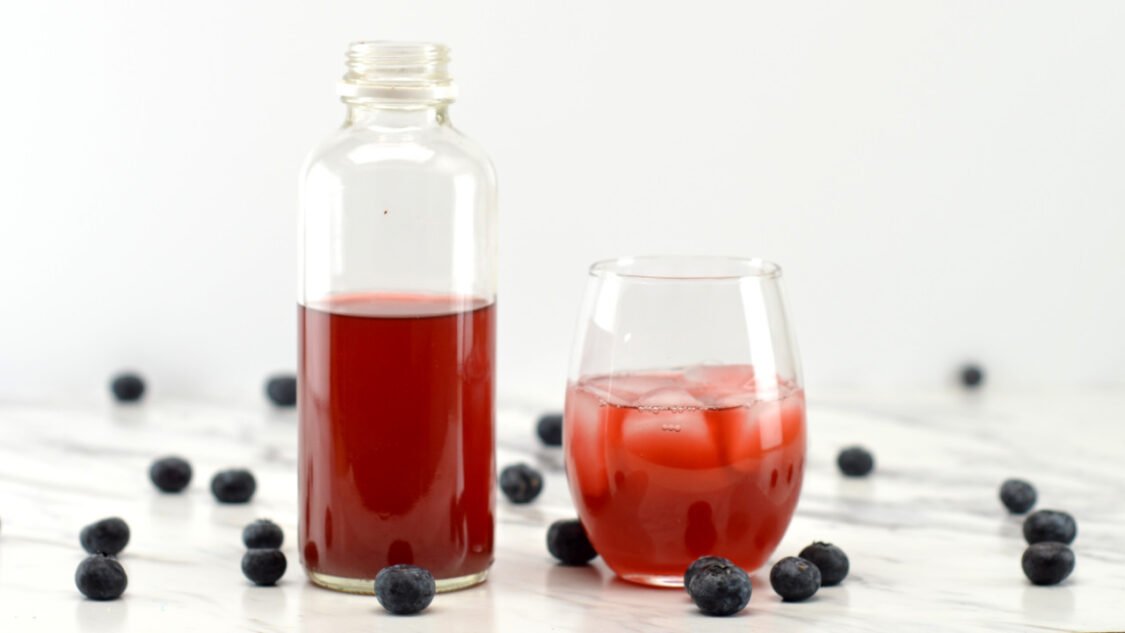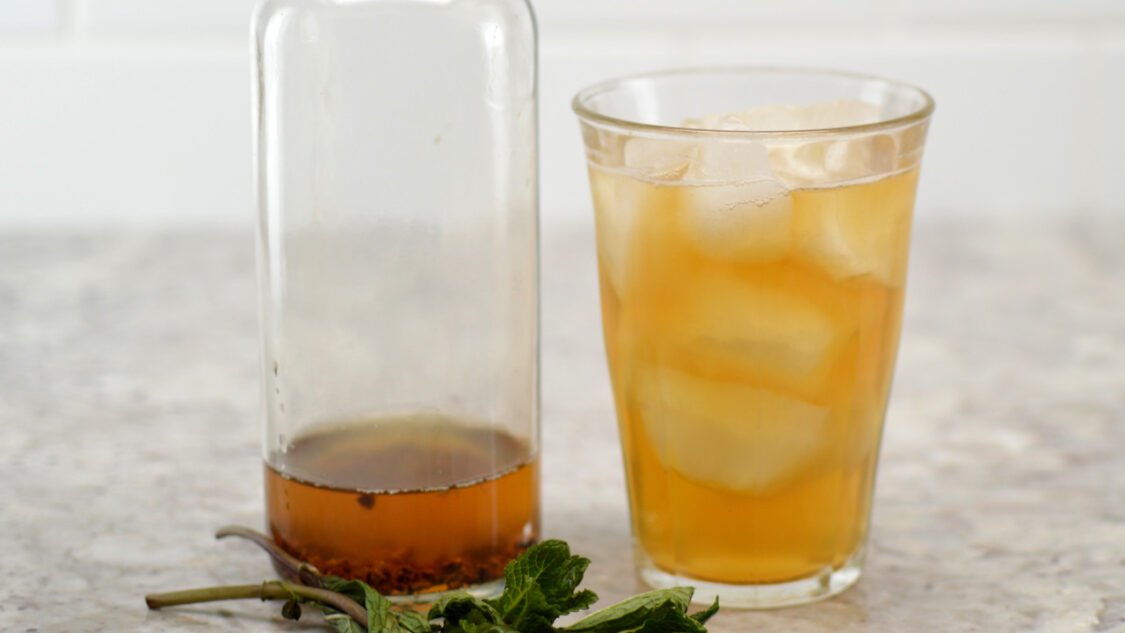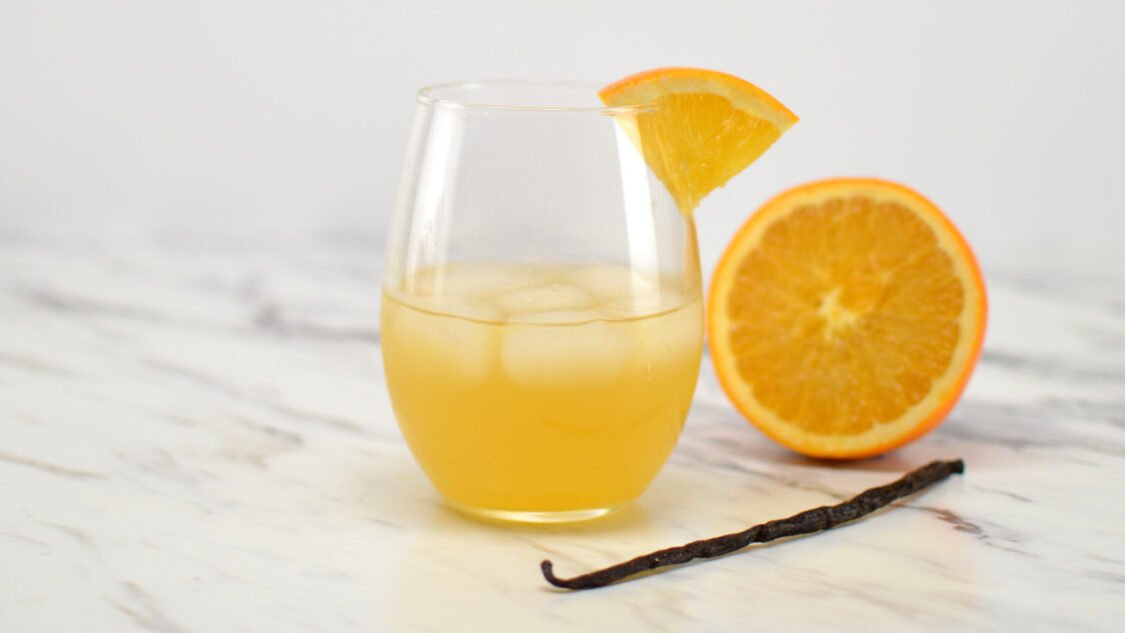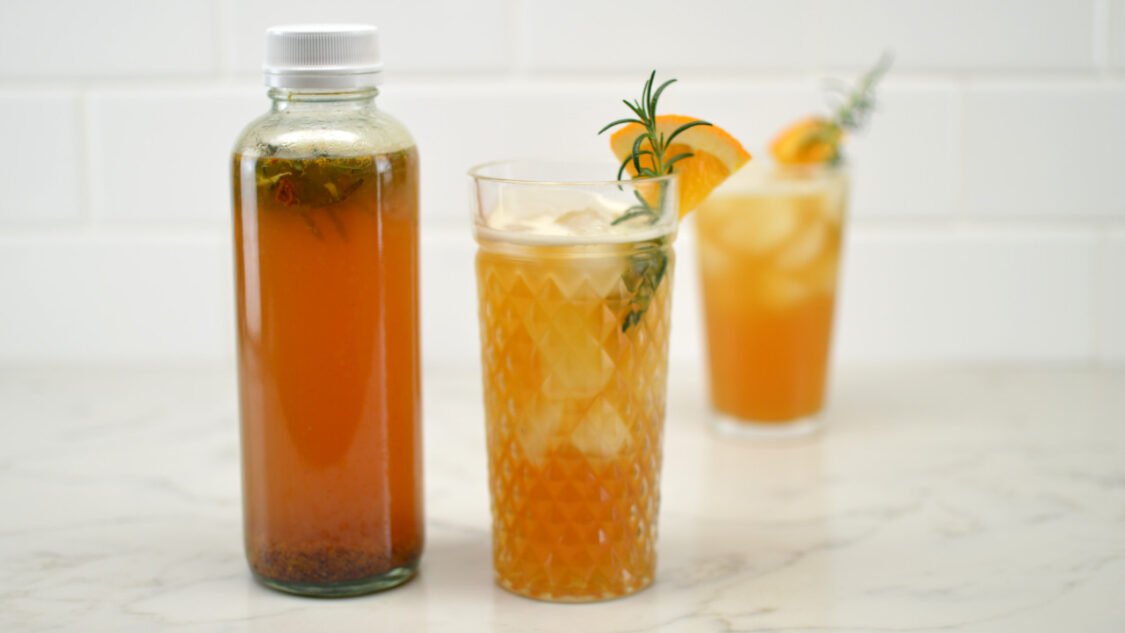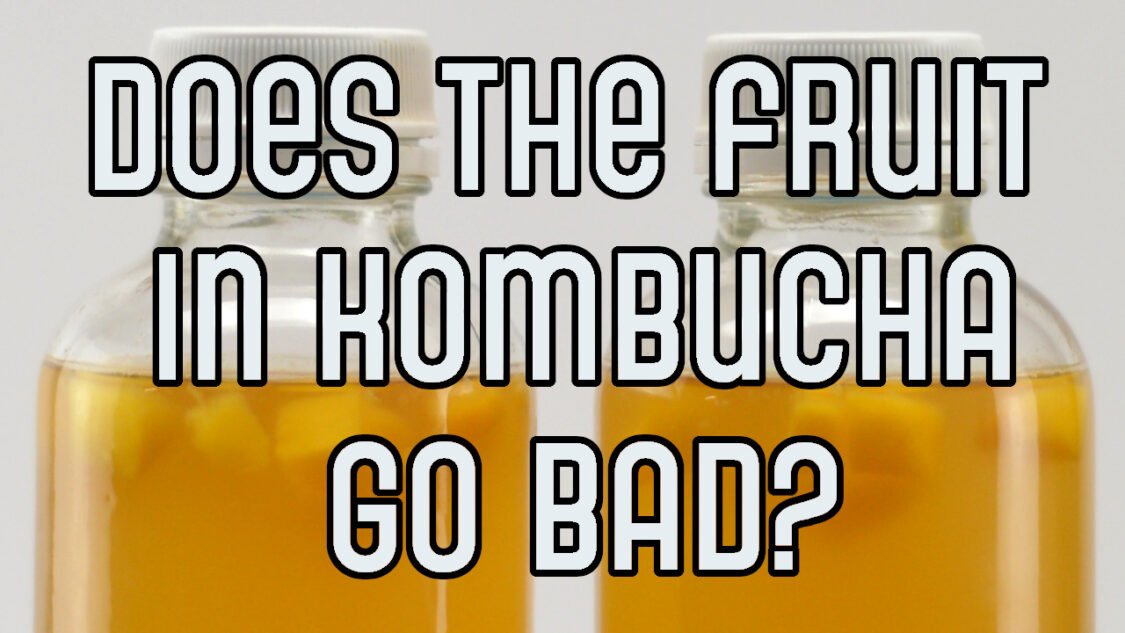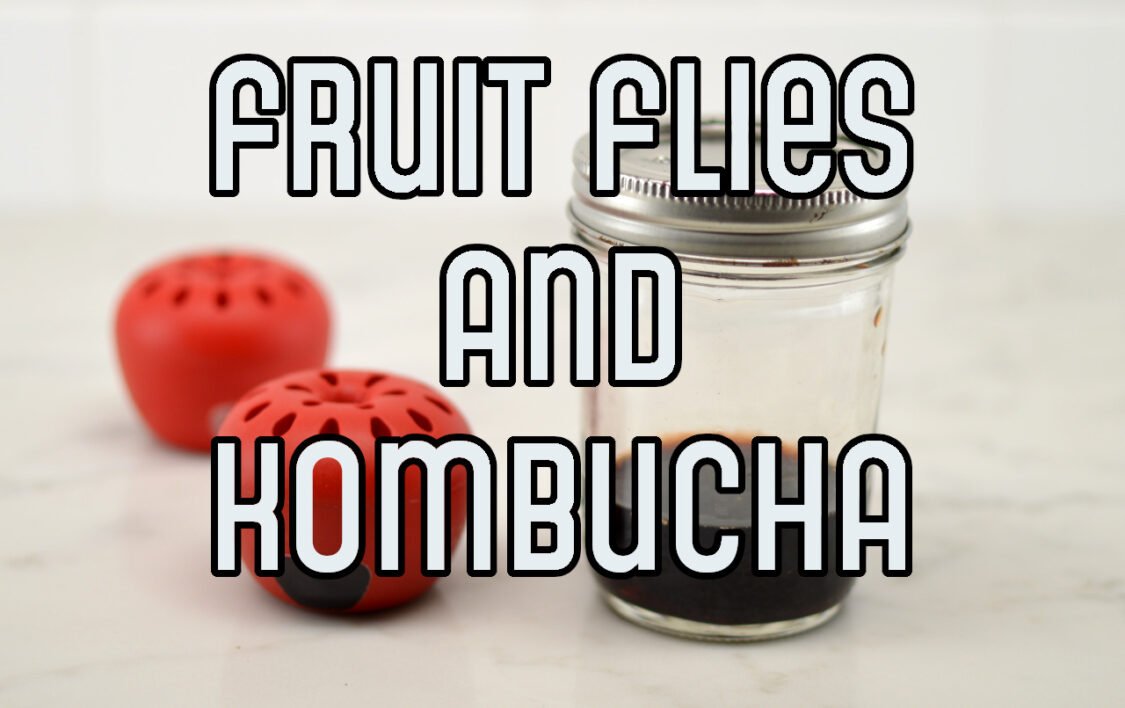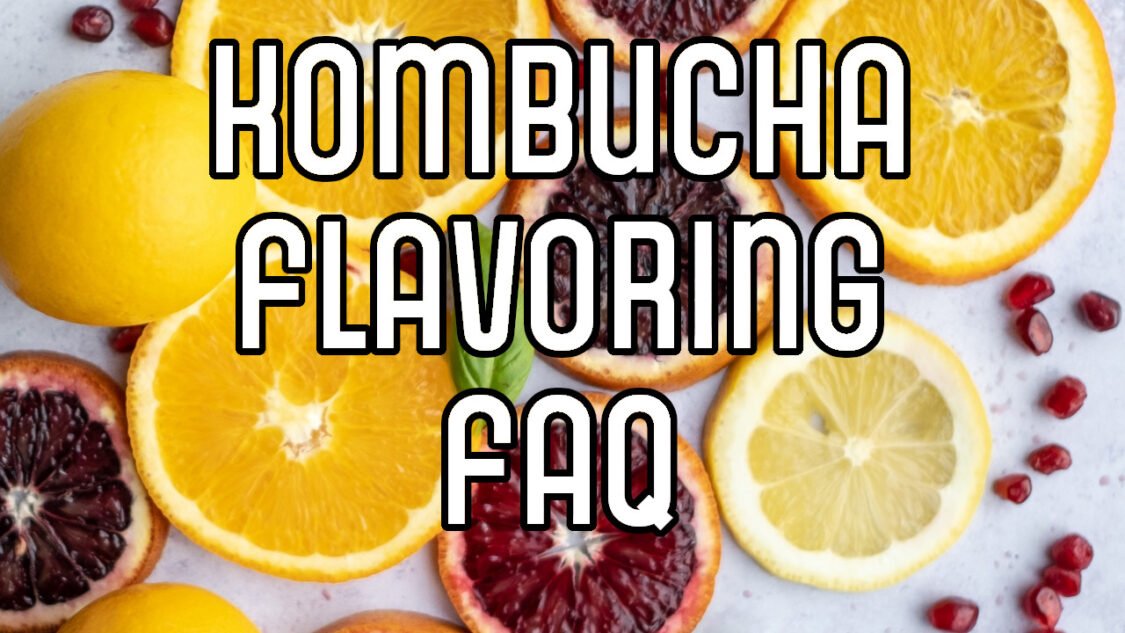Spiced Pear Kombucha
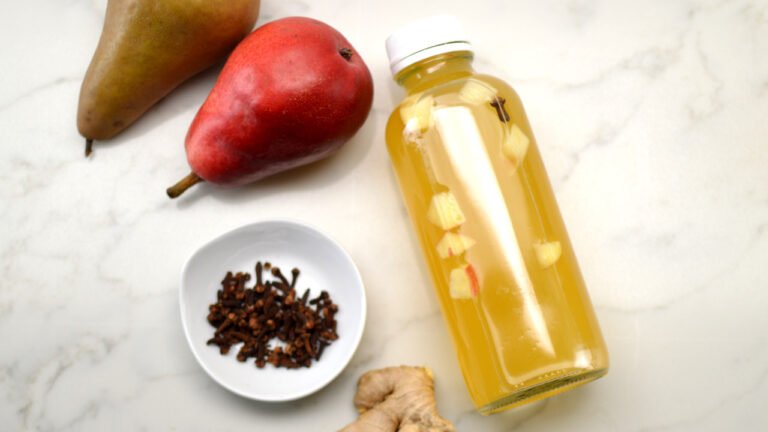
Indulge in the cozy, mulled cider-like flavor of spiced pear kombucha. Fresh ginger and whole cloves infuse the fruity kombucha with their warm and pungent flavors and transform it into a comforting and nourishing drink. Not only does it taste amazing, but ginger and cloves have legendary health properties.
Ginger soothes an upset stomach, manage blood sugar and cholesterol levels, and even positively impact brain health. Meanwhile, cloves add a touch of sweetness and warmth to the kombucha. Enjoy a taste of autumn all year round with spiced pear kombucha.
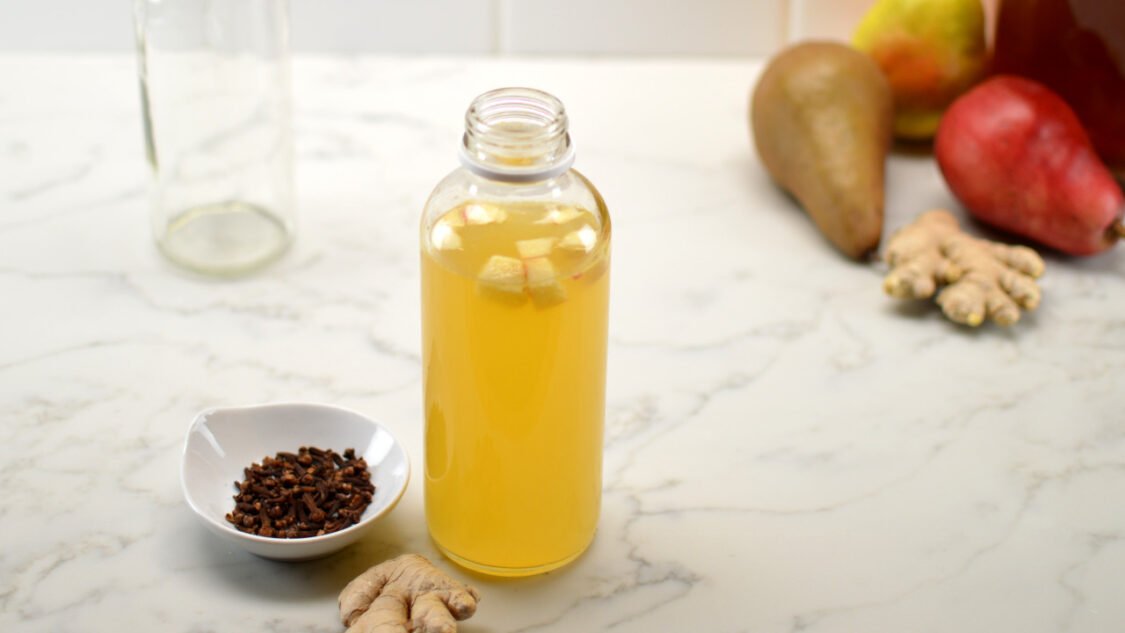
Kombucha Fermentation Overview
There are two fermentation phases when making kombucha:
Primary Fermentation: This is when you transform sweet tea into tart and tasty kombucha. Get all the details at my article on how to make kombucha.
Secondary Fermentation: This is when you carbonate your homemade kombucha by adding flavors (like pears ? and spices) and sugars and bottling it.

Preparing for Secondary Fermentation
This recipe makes about 7 x 16 fluid ounce bottles of finished kombucha (from a 1-gallon batch of unflavored homemade kombucha aka from your primary fermentation).
Reserve 2 cups (about 16 oz / 0.47L) kombucha and your SCOBY from your completed primary fermentation and set aside – you will use this as your starter for your next gallon batch of kombucha.
With your kombucha starter tea and SCOBY placed aside, you now have enough kombucha left to flavor and fill your bottles. This guide assumes are using 16 oz. glass bottles which are a popular choice for kombucha; however, there are many options for bottling kombucha.
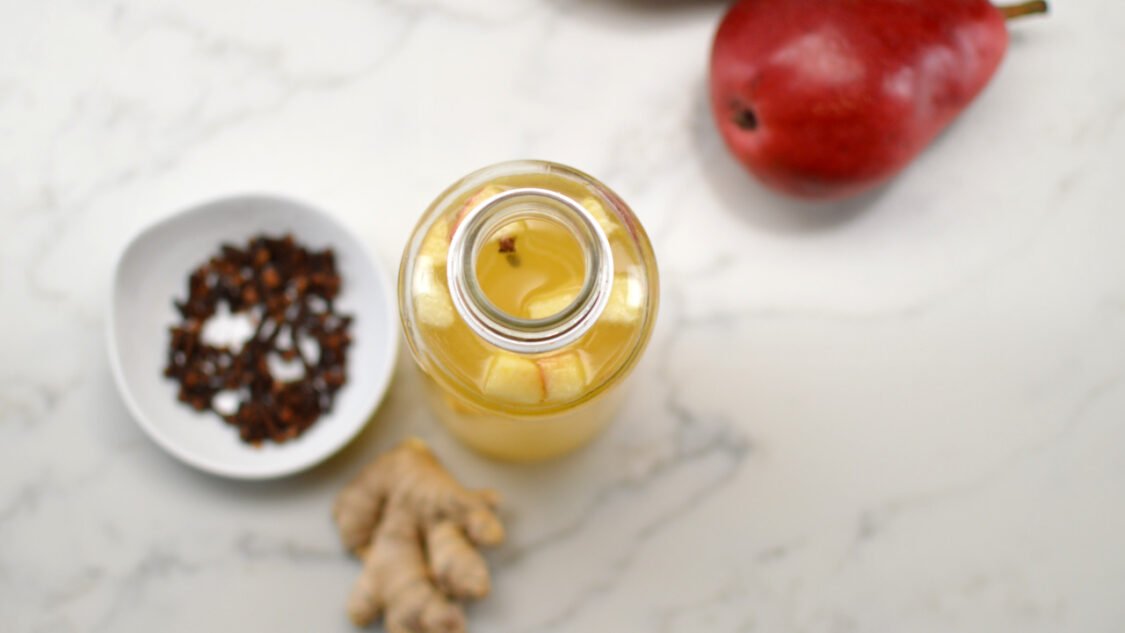
Ingredients to make Spiced Pear Kombucha
Kombucha Finished kombucha from your first fermentation is the base to which you will add the pears and chai spice.
Pears: Pears can are sweet and juicy and come in several different varieties that can range from tangy to spicy. The texture of pears can be crisp, buttery, or somewhere in between. There are many interesting varieties of pears beyond the Green Anjou–the most commonly found supermarket pear. Here is a guide to 10 varieties of pears ↗.
Cloves: Cloves are a pungent warm spice with an intense flavor and aroma. The flavor comes from the compound eugenol (also known as clove oil.) Cloves have a taste of sweetness, bitterness, and astringency (dryness), with a noticeable amount of heat. Similar spices with this warming sensation include nutmeg, cinnamon, and allspice which is why they are commonly combined in a pumpkin spice blend; however, cloves have a much stronger flavor and therefore less is typically used.
Ginger: Ginger is an aromatic herb that pairs well with both sweet and savory foods. It has legendary health properties, primary of which is that it’s great at calming an upset stomach with anti-inflammatory properties, so it’s great for sore muscles and aches and pains. In addition, it can help to manage blood sugar, cholesterol, and even might positively impact brain health.
Fresh ginger has slightly peppery and sweet taste, with a pungent and spicy aroma.
Look for firm ginger “hands” with a taut peel. It should not look wrinkled or feel soft. To use, peel the taupe skin off, then slice, chop, or grate. Frozen ginger is typically available in pre-portioned packets that of one teaspoon nuggets. Frozen ginger is a little less intense than fresh ginger and is a really useful keep on hand in for use in short notice. Ground ginger is not as strongly flavored but has a similar warm bite and a touch of sweetness. Fresh or frozen ginger works best in kombucha
Like garlic, ginger mellows when cooked and will become bitter when burned. The exception is that ginger becomes even more spicy when boiled in a syrup. For more info on that check out how to make great mocktails
Sugar: A touch of additional sugar for bacteria and yeast to feed on which creates carbonation (aka fizzy goodness.) When filling 16 ounce bottles I’ve found a sugar cube has the right amount of sugar (1 tsp) for carbonation and is a convenient way to add the right amount without the mess.
How to make Spiced Pear Kombucha
Add Flavors: Add chopped pear and spices to each bottle.
Bottle: Transfer kombucha to fermentation bottles.
Condition: For 3 to 10 days, until it reaches the carbonation level you like.
Enjoy: Chill in the fridge before serving and strain out fruit pieces when pouring (optional)
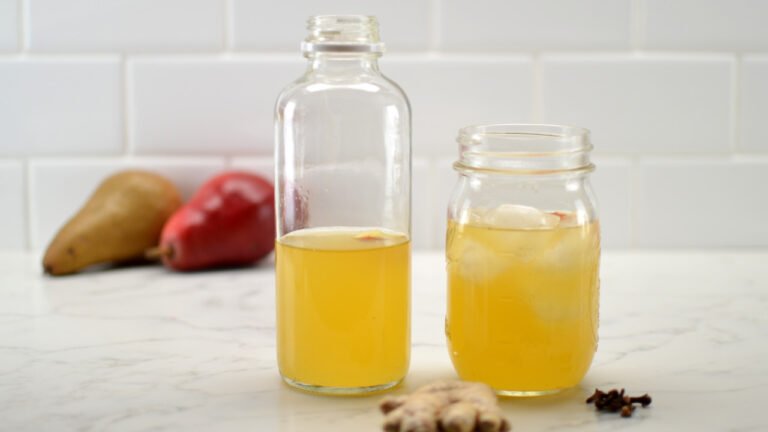
Spiced Pear Kombucha Recipe
Yield: 7 bottles • Active time: 20 minutes • Total time: 3 -10 days
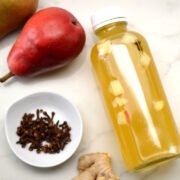
This recipe assumes you are doing a secondary fermentation (flavoring and carbonation) in the bottle. You may also incorporate a third fermentation using the same proportions but following the third fermentation steps.
Ingredients:
1-gallon homemade kombucha from a first fermentation, 3.7 L
1 cup chopped pear, 148 g
3 tsp fresh ginger, grated
7 whole cloves. Ground cloves can also be used but their flavor is more concentrated. Use about 2 tsp (1/4 tsp per 16-ounce bottle)
7 sugar cubes or 2 Tbs sugar, 12 g
Instructions:
Prepare fruit: Clean and finely chop about 1 cup of fresh pear.
Prepare spices: grate about 3 tsp of fresh ginger
Flavor: Evenly divide pear among the bottles and ½ tsp fresh ginger and a whole clove to each bottle.
Sweeten: Add sugar cube or 1 tsp sugar to each bottle to provide the SCOBY another food source to create carbonation.
Fill bottles: Transfer kombucha into fermentation bottles, leaving about 1 inch empty space at the top.
Cap: Cap the filled bottles and tighten the cap snugly.
Ferment: Place in a dark, room temperature area for 3 to 10 days, until it reaches the carbonation level you like. This process will go faster in warmer climates, and slower in cooler climates.
Enjoy: Chill your spiced pear kombucha bottles in the fridge before serving and strain the kombucha to remove fruit pieces when serving (optional).
Homemade kombucha can be stored in the fridge, tightly sealed, for several weeks.
Tips & Tricks:
Make sweet tea for your next batch the night before you flavor and bottling and let it cool on the stove overnight so that you can flavor your kombucha and get your next batch started at the same time.
If this is your first time brewing, it may be helpful to use a plastic water bottle as a gauge. Fill a recyclable plastic bottle with kombucha (leaving 1.5 inches empty at the top). When this bottle becomes rock hard, you’ll know the glass bottles are also ready. This will help you gauge how long it take for kombucha to carbonate your climate and will prevent bottle explosions.
Variations:
Poached Pear Kombucha: Try adding a bit of whole vanilla or vanilla extract to each bottle to give your kombucha the flavor of poached pears!
Nutrition Information:
Kombucha Recipes You Might Also Like
More Kombucha Knowledge
Helping you learn to brew kombucha, find inspiration for new kombucha flavors and use kombucha to make kombucha mocktails



